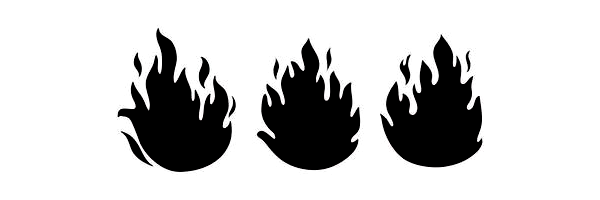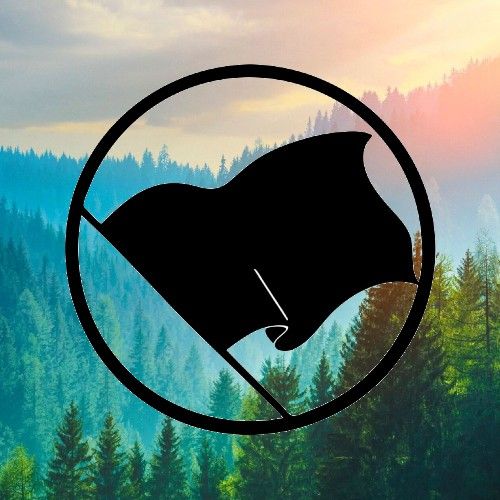
Marx: "The less you eat, drink and read books; the less you go to the theatre, the dance hall, the public house; the less you think, love, theorize, sing, paint, fence, etc., the more you save—the greater becomes your treasure which neither moths nor dust will devour—your capital. The less you are, the more you have; the less you express your own life, the greater is your alienated life—the greater is the store of your estranged being."
From the Economic and Philosophical Manuscripts of 1844
here are the studies that were shared with me through my research hub on the topic of shoplifting. i'm still looking for more though!
https://www.jstor.org/stable/2576686
A Tatar Shaman, Minusinsk, Siberia, 1910.
A large minority of people in North Asia, particularly in Siberia, follow religio-cultural practices of Shamanism. Some researchers regard Siberia as heartland of Shamanism.
Siberian Shamans, reenacting their dreams wherein they had rescued soul of client, were conducted in, Oroch, Altai, and Nganasan healing séances.
© Historical Photographs
fire for fields and forests
https://yourforestpodcast.com/good-fire-podcast - a podcast about tending the land with fire and other natural wisdom by experienced elders, younger native people, and scholars, mostly indigenous. I was a little curious about how people traditionally used fire in their farming. Now, I'm a believer.
I learned that some native people do a "cultural" burn after they know the land and for something specific in the landscape, e.g., a species or just the whole system, but not all native people do a "cultural" burn. A human-managed forest has trees that are spaced out. One thing this does is allow precipitation to reach the soil and the roots.
I also learned that intentional fires are not just for preventing catestrophic burns that ruin the topsoil. Burning an area causes native plants and grasses to emerge. I bet you can easily raise plants from seed in a swidden. A burned area stays thinned out for eight years. They burn next to something green, next to water, or when rain is imminent. Those with traditional experience say it will go out eventually. People also burn to prevent ticks.
I had to search for a video that they mentioned in season 2, episode 3, but I'm not sure if I found it. Here is what I found: Gathering Voices Society on Vimeo, https://vimeo.com/user105935556.
Here's a fire-related quote that I've posted before:
"low-intensity fires were created in such a way that they did not get out of hand and did not harm trees and other large vegetation. Burning released nutrients to the soil, stimulated regrowth—which provided forage for game and other wildlife—and prevented a buildup of fuel, which would otherwise result in disastrous wildfires. It also created and maintained prairies and meadows, increased the abundance of food-producing bulbs and grasses, enhanced the density and diversity of plants, reduced competition, and helped control insects and disease."
"The effect of these practices ... was to maintain large and small areas at a mid-succession stage by simulating natural disturbance. The disturbances often reduced the dominance of existing communities, creating openings for colonization by other species. While the biomass was reduced temporarily, it was more than made up for by the increased vigor of the new growth. Some areas were burned every two or three years, others every five or six, while others were burned every fifteen years or so." (One-Straw Revolutionary, chapter five)
A similar podcast is The Big Burn, https://laist.com/podcasts/the-big-burn, but only the third and fourth episodes contain indigenous knowledge.
I read that southeast North "American" natives used to burn underbrush, grass, and weeds, too. ("Native American 'Garden Agriculture' in Southeastern North America" by C Margaret Scarry and John F Scarry from World Archaeology, Vol 37, No 2 (Jun 2005) jstor.org/stable/40024233)
#agroforestry #indigenousAustralia @indigenousauthors #IndigenousKnowledge #indigenousPeoples #indigenousPeople #IndigenousAustralians #Aboriginal #FirstNations #LandBack #IndigenousAuthors #NativeAmericans #ClimateChange #NationalParks #CrownLand
"As expressed in panmetallism, metal is coextensive to the whole of matter, and the whole of matter to metallurgy. Even the waters, the grasses and varieties of wood, the animals are populated by salts or mineral elements. Not everything is metal, but metal is everywhere.
Metal is the conductor of all matter. The machinic phylum is metallurgical, or at least has a metallic head, as its itinerant probe-head or guidance device. And thought is born more from metal than from stone: metallurgy is minor science in person, "vague" science or the phenomenology of matter. The prodigious idea of Nonorganic Life—the very same idea Worringer considered the barbarian idea par excellence—was the invention, the intuition of metallurgy.
Metal is neither a thing nor an organism, but a body without organs...
The relation between metallurgy and alchemy reposes not, as Jung believed, on the symbolic value of metal and its correspondence with an organic soul but on the immanent power of corporeality in all matter, and on the esprit de corps accompanying it." -Deleuze and Guattari
1 and 3 have always been the most difficult for me to understand, on every rereading. the difference between smooth space and striated space makes enough sense to me but i've never felt like i *really* understood what was meant by a science of a "hydraulic model" of "vortical flows"
Deleuze and Guattari, in trying to show the existence of the "different kind of science" than the form of interiority, state science, that we're used to, explains the characteristics of this Other science as such:
"1. First of all, it uses a hydraulic model, rather than being a theory of solids treating fluids as a special case; ancient atomism is inseparable from flows, and flux is reality itself, or consistency.
2. The model in question is one of becoming and heterogeneity, as opposed to the stable, the eternal, the identical, the constant. It is a "paradox" to make becoming itself a model, and no longer a secondary characteristic, a copy; in the Timaeus, Plato raises this possibility, but only in order to exclude it and conjure it away in the name of royal science...
3. One no longer goes from the straight line to its parallels, in a lamellar or laminar flow, but from a curvilinear declination to the formation of spirals and vortices on an inclined plane: the greatest slope for the smallest angle. From turba to turbo: in other words, from bands or packs of atoms to the great vortical organizations. The model is a vortical one; it operates in an open space throughout which things-flows are distributed, rather than plotting out a closed space for linear and solid things. It is the difference between a smooth (vectorial, projective, or topological) space and a striated (metric) space: in the first case "space is occupied without being counted,"and in the second case "space is counted in order to be occupied."
4. Finally, the model is problematic, rather than theorematic: figures are considered only from the viewpoint of the affections that befall them: sections, ablations, adjunctions, projections. One does not go by specific differences from a genus to its species, or by deduction from a stable essence to the properties deriving from it, but rather from a problem to the accidents that condition and resolve it. This involves all kinds of deformations, transmutations, passages to the limit, operations in which each figure designates an "event" much more than an essence... Whereas the theorem belongs to the rational order, the problem is affective and is inseparable from the metamorphoses, generations, and creations within science itself. Despite what Gabriel Marcel may say, the problem is not an "obstacle"; it is the surpassing of the obstacle, a projection, in other words, a war machine."
A wandering deer, building shrines along the way.
